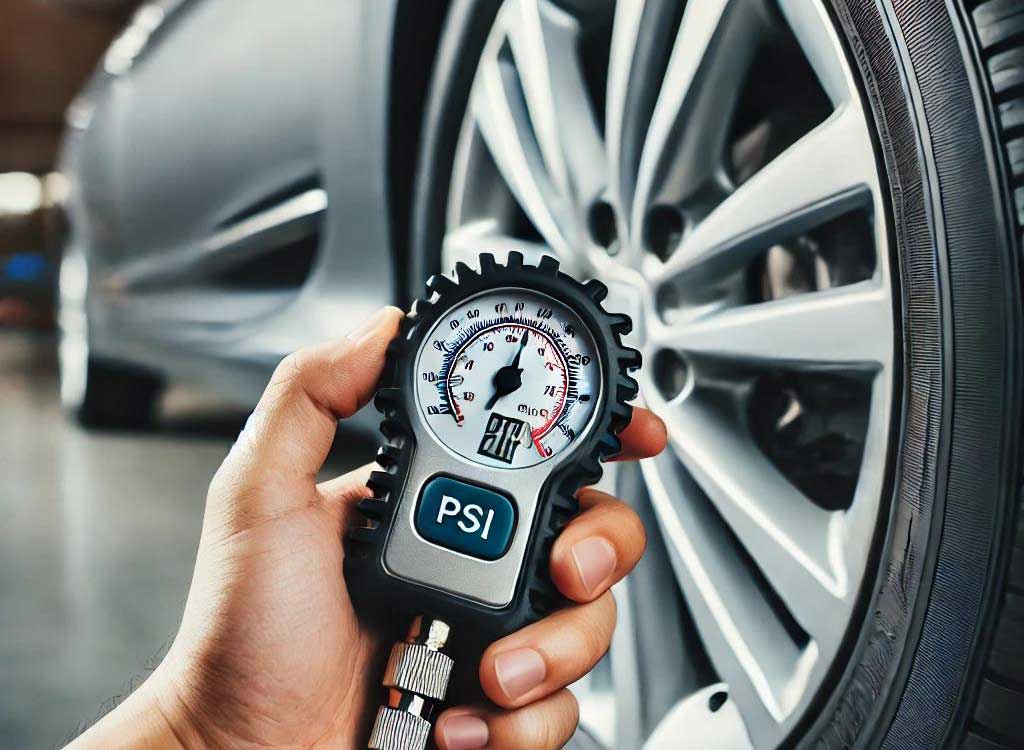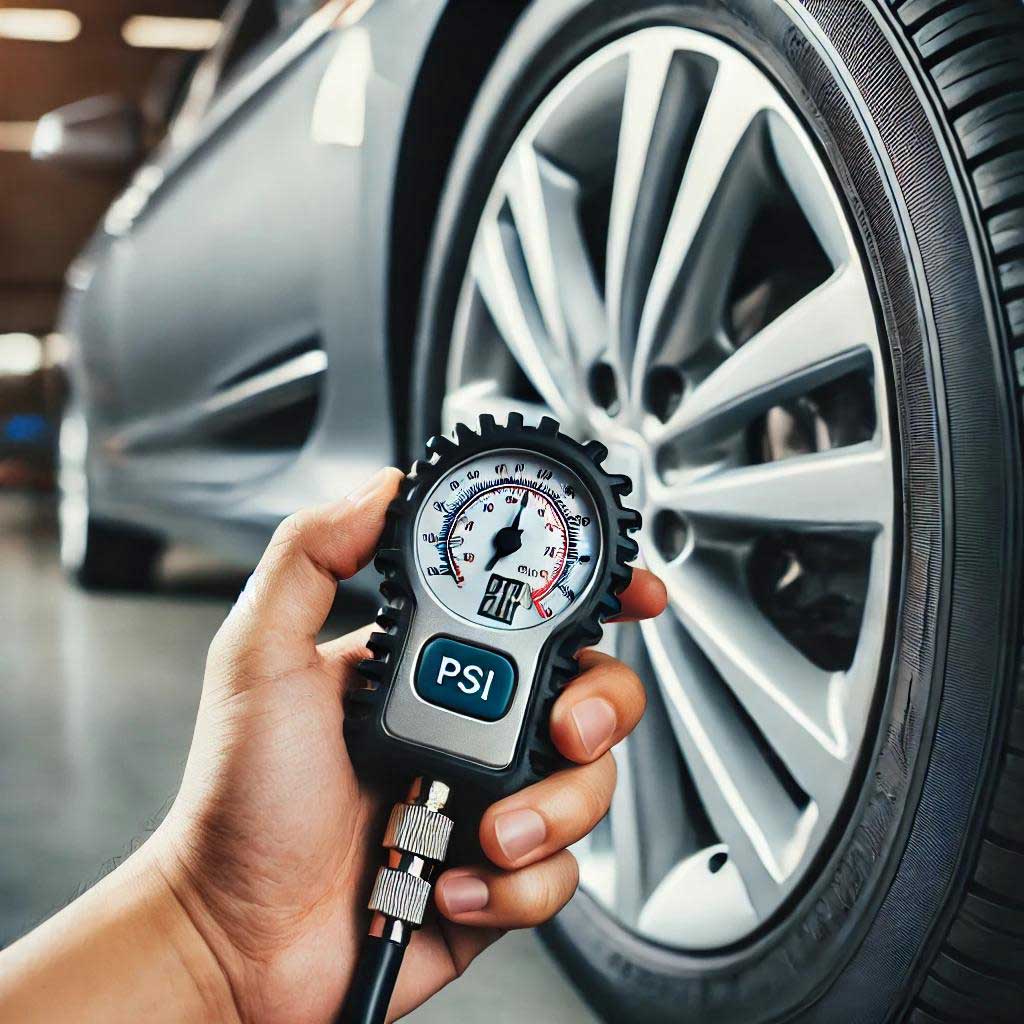Monday to Saturday - 9:00 am -18:00 pm

Tire pressure might not seem like a big deal—until it is. For Honda Accord drivers, keeping your tires at the correct PSI isn’t just about getting from A to B; it’s about safety, fuel efficiency, and smoother driving.
If you’ve ever seen that pesky TPMS (Tire Pressure Monitoring System) light blink on your dashboard, you’re in the right place. Whether you’re driving a 2008 model or a 2025 hybrid, the rules of tire pressure don’t change much—but understanding what PSI is best for your exact model, and how to handle TPMS warnings, can save you a trip to the shop.
In this detailed guide, you’ll learn:
- The ideal tire pressure for various Honda Accord models
- What the TPMS light means and how to reset it
- How to check your tire pressure correctly
- What affects your Honda’s tire pressure
- Frequently asked questions by Accord owners

Recommended Honda Accord Tire Pressure by Model Year
Most Honda Accords follow a pretty consistent tire pressure standard, but small changes can exist based on the model year and trim.
Here’s a quick reference chart:
Honda Accord Tire Pressure Chart
| Model Year | Front Tires (PSI) | Rear Tires (PSI) |
|---|---|---|
| 2008–2012 | 32 PSI | 32 PSI |
| 2013–2017 | 33 PSI | 32 PSI |
| 2018–2022 | 35 PSI | 35 PSI |
| 2023–2025 | 35 PSI | 35 PSI |
💡 Pro Tip: Always check your specific vehicle’s door jamb sticker (driver’s side) for the official PSI.
What Happens If Your Honda Accord Tire Pressure Is Too Low?
Driving with under-inflated tires can cause:
- Uneven tire wear
- Reduced fuel economy
- Longer braking distances
- Increased risk of tire blowouts
A tire that’s even 5 PSI below its recommended level can make a difference in performance—and that’s when the TPMS steps in.
What Does the TPMS Light Mean on a Honda Accord?
If your TPMS light is on, it means one or more of your tires is not within the safe pressure range. It could also indicate a malfunction in the TPMS system itself.
Here are the common TPMS scenarios:
- Flashing Light: Usually means the TPMS sensor is faulty or the system needs a reset.
- Steady Light: One or more tires are underinflated.
- No Light After Inflation: System may need a manual reset.
How to Check Tire Pressure on a Honda Accord
Here’s how to quickly and accurately check your tire pressure:
- Use a reliable tire pressure gauge – digital or analog.
- Check when tires are cold – usually before driving or after the car has been off for at least 3 hours.
- Remove the valve cap and press the gauge onto the stem.
- Read the PSI and compare with your model’s recommendation.
- Inflate or deflate as needed, then replace the cap.
Don’t forget the spare! Some Accords have full-size spares that also require inflation checks.
How to Reset the Honda Accord TPMS Light
Once you’ve inflated your tires to the correct PSI, the TPMS light should turn off automatically after a short drive. If it doesn’t, here’s how to manually reset it based on your model year.
Reset Method for 2013–2017 Honda Accord
- Turn the ignition to the ON position (but don’t start the engine).
- Press the TPMS button (usually beneath the left side of the steering wheel).
- Hold the button until the TPMS light blinks twice.
- Drive your car at 30+ mph for about 10 minutes to complete the reset.
Reset Method for 2018–2025 Honda Accord (with touchscreen)
- Turn the ignition ON.
- Tap Home > Settings > Vehicle.
- Select TPMS Calibration.
- Tap Calibrate.
- Drive your car normally for 10–30 minutes.
✅ Important: If the light stays on even after a reset, it could mean one of your TPMS sensors is damaged or the tire has a slow leak.
Factors That Can Affect Your Honda Accord Tire Pressure
Even if you just filled up your tires yesterday, several factors could throw your PSI off track:
- Weather Changes: For every 10°F drop in temperature, your tire pressure can decrease by 1–2 PSI.
- Driving Style: Aggressive driving heats up tires, temporarily raising PSI.
- Altitude: Higher elevations can lead to over-inflation if not adjusted properly.
- Tire Age or Damage: Older tires or those with minor punctures may lose air faster.
Keep a monthly routine of checking your tire pressure—even when the TPMS light isn’t on.
Honda Accord Tire Pressure Tips for Better Performance
Want your Honda Accord to ride like new? Here are some quick tips to get the most out of your tires:
- Check PSI monthly and before long road trips.
- Use nitrogen instead of air for more stable pressure (optional).
- Always rotate your tires every 5,000–7,500 miles.
- Replace tires in sets or pairs to keep handling even.
- Don’t forget seasonal adjustments—cold winters and hot summers affect PSI.
FAQs – Honda Accord Tire Pressure Questions Answered
What is the ideal tire pressure for a Honda Accord?
Most Honda Accord models recommend 32–35 PSI for both front and rear tires. Always refer to the sticker on your driver-side door jamb for your exact trim and year.
Can I drive my Honda Accord with the TPMS light on?
You can, but it’s not recommended. The TPMS light is a safety feature that alerts you to underinflated tires, which can lead to poor handling, increased fuel use, and potential blowouts.
How often should I check my Honda Accord’s tire pressure?
It’s a good habit to check tire pressure at least once a month, and before long trips or major temperature changes.
What if I’ve inflated the tires but the TPMS light won’t turn off?
Try resetting the system using your car’s TPMS reset method. If it still doesn’t turn off, it could be a bad sensor or a slow leak in the tire.
Do I need to recalibrate TPMS every time I rotate tires?
Yes. Any time you rotate, change, or adjust your tires significantly, it’s a good idea to recalibrate the TPMS to maintain accuracy.
Final Thoughts
Keeping the correct tire pressure in your Honda Accord isn’t just about avoiding a dashboard warning—it’s about smoother handling, better gas mileage, and safer driving overall. Whether you’re cruising in a 2008 model or the latest 2025 hybrid, regular PSI checks and TPMS resets should be part of your maintenance checklist.